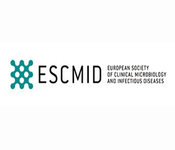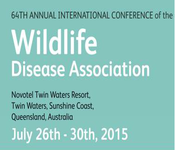Theme: Addressing New Challenges and Emerging Issues in Parasitology
Parasitology-2015
International Conference on Parasitology (Parasitology-2015) is scheduled from August 24-26, 2015 in Philadelphia, Pennsylvania, USA. We look forward to gathering people in academia and society interested in parasitology to share the latest trends and important issues relevant to our field/subject area. The scientific programme of the conference is broad and embraces different research aspects with focus on applied and ecological parasitology, and in particular with a veterinary and medical interest. The conference will include invited speakers, oral presentations, poster session and the young scientist award.
Special Session in the Conference:
Title: Teaching Trends in Parasitology: From Faculty & Students Perspective
Organizer: Dr. Doaa Moustafa Sultan, Dubai Medical College, UAE
OMICS International through its Open Access Initiative is committed to make genuine and reliable contributions to the scientific community. OMICS Group hosts over 400 leading-edge peer reviewed Open Access journals and has organized over 300 scientific conferences all over the world. OMICS International journals have over 3 million readers and the fame and success of the same can be attributed to the strong editorial board which contains over 30000 eminent personalities and the rapid, quality and quick review processing.OMICS Conference is a great platform for the researchers to get the knowledge to fight against these parasitic diseases.Target Audience for Parasitology-2015 includes Researchers,Industrialists,Students and Public Sector Experts.
Philadelphia is the largest city in the Commonwealth of Pennsylvania, the fifth-most-populous city in the US. According to 2001 year report, parasitic diseases is still an important human diseases.Worldwide 210 million people reside in the endemic areas of malaria, 10 million cases with malaria occur every year; 20 million infected individuals was estimated in the world. Approximately 1,300 cases of malaria are reported each year in the US. Total US Bilaterial Funding for malaria is 852 US Billion Dollars and total International Funding for malaria is 2000 US Million Dollars.The market value of antiparasitic drug in US is 27,782 US Dollars and in India it is 11,090 US Dollars.
For more information on Market Analysis Report
Marine Parasitology is an important field in aquatic science. Because of its close linkage to other fields in marine sciences such as fisheries, Mari culture, fish ecology and environmental monitoring, marine parasitology should be seen in the context of other marine science disciplines.Fish parasites play a major role in marine biodiversity, infecting hosts at all different trophic levels. The growth of marine aquaculture, concerns about the effects of pollution on fish health, and the possible use of parasites as biological indicator organisms has led to a steady increase in interest in this topic.
Some parasitic diseases are easily treated and some are not. The burden of these diseases often rests on communities in the tropics and subtropics. Ascaris worms are found in temperate as well as tropical regions; indeed, they are probably the most common parasite in the world. While the mortality rate is relatively low (estimated at 20,000 per year), ascariasis infection can be debilitating, causing abdominal pain and lack of weight gain in children and sometimes resulting in intestinal obstruction.
A biochemical reaction is the transformation of one molecule to a different molecule inside a cell. The structure, biosynthesis, degradation, properties and function of DNA, RNA, proteins, lipids, carbohydrates and small molecular-weight substances , intermediary metabolism and bioenergetics ,drug target characterization and the mode of action of antiparasitic drugs ,molecular and biochemical aspects of membrane structure and function , host-pathogenic interaction come under biochemical parasitology.
The term molecular parasitology should not be used in the restricted molecular biology sense but rather the analysis of processes and structure of parasites at different molecular level. Molecular Parasitology researches the biology and epidemiology of parasitic worms of humans and works on developing new interventions and diagnostic procedures that will lead to their elimination. Much of the experimental parasitology soon will be dominated with molecular parasitology.
The comparative approach will assuredly find wide usage, for example, the comparative metabolic biochemistry, comparative immunochemistry, comparative nucleic acid chemistry of parasites differing in virulence as well as life stage. They are also differing in pathogenicity and infectivity. Parasite heterogeneity will have new meaning in era of molecular parasitology.
During our relatively short history on Earth, humans have acquired an amazing number of parasites, about 300 species of helminthic worms and over 70 species of protozoa. Many of these are rare and accidental parasites, but we still harbour about 90 relatively common species, of which a small proportion causes some of the most important diseases in the world. The history of human parasitology proceeded along two lines, the discovery of a parasite and its subsequent association with disease and the recognition of a disease and the subsequent discovery that it was caused by a parasite.
Applications of basic research in parasite systematics, are likely to be forthcoming, and will provide career opportunities for parasitologists. Geographic information systems will assist ecologists in understanding large-scale patterns of parasite distribution. A vital future consideration will be the assessment of the potential that global warming will have on the redistribution of parasites on our planet. One ominous implication of global warming is the possibility that medically important parasites that today are considered to cause "tropical diseases" will spread into temperate regions as the climate warm.
Host–parasite coevolution is one of the most powerful selective forces in experiment In a spatially structured environment, it can result in local adaptation of the parasite to the host and vice versa. Scientists are developing a vaccine against malaria that is designed to limit the illness in children who have been bitten by mosquitoes carrying the disease-causing organism.
Malaria is transmitted exclusively through the bites of Anopheles mosquitoes. The intensity of transmission depends on factors related to the parasite, the vector, the human host, and the environment. Approximately half of the world's population is at risk of malaria. Most malaria cases and deaths occur in sub-Saharan Africa. In 2013, malaria caused an estimated 584 000 deaths (with an uncertainty range of 367 000 to 755 000), mostly among african children.
Medical parasitology traditionally has included the study of three major groups of animals: parasitic protozoa, parasitic helminths (worms), and those arthropods that directly cause disease or act as vectors of various pathogens. A parasite is a pathogen that simultaneously injures and derives sustenance from its host. Some organisms called parasites are actually commensals, in that they neither benefit nor harm their host (for example, Entamoeba coli). Although parasitology had its origins in the zoologic sciences, it is today an interdisciplinary field, greatly influenced by microbiology, immunology, biochemistry, and other life sciences.A misconception about parasitic infections is that they occur only in tropical areas. Although most parasitic infections are more prevalent in the tropics, many people in temperate and subtropical areas also become infected, and visitors to tropical countries may return with a parasite infection.
Animal Modelling & Veterinary Parasitology
Parasites are responsible for major economic losses in food–producing animals and are important in companion animals. We are able to offer a wide range of services for the study of ectoparasites and endoparasites in both groups.
Parasitic models
· Ectoparasites, including fleas, ticks and biting flies
· Endoparasites, including lung worms and intestinal nematodes
· Species covered include cattle, sheep, goats, camelids, poultry, pigs, horses, dogs and cats
Ticks and Tick-borne Pathogens in Tropical Veterinary Medicine
For a person or companion animal to acquire a tick-borne disease requires that that individual gets bitten by a tick and that that tick feeds for a sufficient period of time. The feeding time required to transmit pathogens differs for different ticks and different pathogens. Transmission of the bacteria that causes Lyme disease is well understood to require a substantial feeding period.
In the United States, some ticks carry pathogens that can cause human disease, including:
Anaplasmosis is transmitted to humans by tick bites primarily from the blacklegged tick (Ixodes scapularis) in the northeastern and upper midwestern U.S. and the western blacklegged tick (Ixodes pacificus) along the Pacific coast.
Babesiosis is caused by microscopic parasites that infect red blood cells. Most human cases of babesiosis in the U.S. are caused by Babesia microti. Babesia microti is transmitted by the blacklegged tick (Ixodes scapularis) and is found primarily in the northeast and upper midwest.
Borrelia miyamotoi infection has recently been described as a cause of illness in the U.S. It is transmitted by the blacklegged tick (Ixodes scapularis) and has a range similar to that of Lyme disease.
Colorado tick fever is caused by a virus transmitted by the Rocky Mountain wood tick (Dermacentor andersoni). It occurs in the the Rocky Mountain states at elevations of 4,000 to 10,500 feet.
Ehrlichiosis is transmitted to humans by the lone star tick (Ambylomma americanum), found primarily in the southcentral and eastern U.S.
Heartland virus infection has been identified in eight patients in Missouri and Tennessee as of March 2014. Studies suggest that Lone Star ticks may transmit the virus. It is unknown if the virus may be found in other areas of the U.S.
Challenges in Malaria Research
Difficulty in control and elimination of P. vivax
Around 50% of the confirmed malaria cases are P. vivax cases. Several elements make it difficult to control: it has a unique biology (generation of hypnzoites in the liver stage) with a large prevalence of asymptomatic cases among semi-immune populations, it responds differently to anti-malarials than P. falciparum and research in the past years on P. vivax has been poorly funded leading to few tools and approaches for control, the current tools for radical cure (14-days of primaquine) poses a challenge of adherence to treatment and in places where P. vivax transmission occurs, mixed infections with P. falciparum are common. Basic and operational research on P. vivax needs to be expanded and strong BCC programs are required to ensure adherence to treatments. In addition, regional cooperation networks could be created to share practices on the control of P. vivax malaria.
Malaria outbreaks/ epidemics are common during the rainy season. Outbreaks involve a village or a group of villages in a PHC but epidemics generally cover the entire district or an ecotype. These are invariably the results of neglect in surveillance and the lack of adequate treatment. In the outbreak areas transmission may not be intense but these populations remain at high risk of repeated outbreaks and upsurge of drug resistant malaria. Malaria outbreaks in SEA Region suggest that conditions for the occurrence of epidemics are very favourable in many countries of the Region and prevention of outbreaks require sustained vigilance and preparedness to combat deteriorating malaria situation.
A zoonosis is any disease or infection that is naturally transmissible from vertebrate animals to humans. Common examples include tick-borne illnesses such as Lyme disease, wildlife-transmitted illnesses such as rabies and farm animal-transmitted diseases such as bovine tuberculosis from cattle. Animals thus play an essential role in maintaining zoonotic infections in nature. Zoonoses may be bacterial, viral, or parasitic, or may involve unconventional agents. As well as being a public health problem, many of the major zoonotic diseases prevent the efficient production of food of animal origin and create obstacles to international trade in animal products. The number of zoonotic diseases may increase as rates of worldwide travel, globalization of markets, and human destruction of animal habitat continue to rise.
Parasites engage a plethora of surface and secreted molecules to attach to and enter mammalian body/cells. Parasites are classified based on their interactions with their hosts and on their life cycles. An obligate parasite is totally dependent on the host to complete its life cycle, while a facultative parasite is not. Host cell manipulation and immunomodulation are important features of obligate intracellular parasites. Parasites that live on the outside of the host are called ectoparasites. Those that live inside the host are called endoparasites. The relationship between host and parasite determines the outcome of the infection. In the process of evolution, most parasites have developed adaptive mechanisms to evade host immune system responses.
Malaria, a parasitic infection transmitted by mosquitoes, is the second most common cause of infectious disease-related death in the world, after tuberculosis. Pregnant women infected with malaria usually have more severe symptoms and outcomes, with higher rates of miscarriage, intrauterine demise, premature delivery, low-birth-weight neonates, and neonatal death. They are also at a higher risk for severe anemia and maternal death. Pregnant women are three times more likely to suffer from severe disease as a result of malarial infection compared with their non-pregnant counterparts. Prevention of malarial disease in pregnancy relies on two main strategies: providing pregnant women with insecticide-treated bed nets (ITN) and intermittent presumptive treatment (IPT) with antimalarial medications.
Dear Conference Attendees
I am delighted to welcome you to Philadelphia for the “International Conference on Parasitology” which brings together experts and academics from around the world. New trends and challenges to Parasitological Research are being put forward by the rapidly changing social and economic situation in many parts of the world. At the present the implementation of an appropriate control programs towards the reduction of infection in man and animals will be discussed.
Do not hesitate to get in touch with me if you have any suggestions or questions regarding the organization of this meeting.
Ingrid Papajova
Deputy Director and Head
Institute of Parasitology of Slovak Academy of Sciences
Slovakia
Conference Highlights
- Parasitology: Overview
- Medical Parasitology
- Animal Modelling & Veterinary Parasitology
- Bacterial Pathogenesis,Virulence & Countermeasures
- Structural and Molecular Parasitology
- Vector-Borne Viral Diseases
- Ticks and Tick-borne Pathogens in Tropical Veterinary Medicine
- Pathogenesis and Immunity
- Challenges in Malaria Research
- Advances in Antimicrobials, Vaccines & Therapeutics
- Microbial Genomics, Systems Biology and Bioinformatics
- Companion Animal
- Plant-microbe Symbiosis & Parasitic diseases
- Molecular Genetics and Genomic Analysis
- Diagnosis
- Novel Approaches in Disease Control
- Ethical Issues
To share your views and research, please click here to register for the Conference.
To Collaborate Scientific Professionals around the World
| Conference Date | August 24-26, 2015 | ||
| Sponsors & Exhibitors |
|
||
| Speaker Opportunity Closed | Day 1 | Day 2 | Day 3 |
| Poster Opportunity Closed | Click Here to View | ||
Useful Links
Special Issues
All accepted abstracts will be published in respective Our International Journals.
Abstracts will be provided with Digital Object Identifier by










